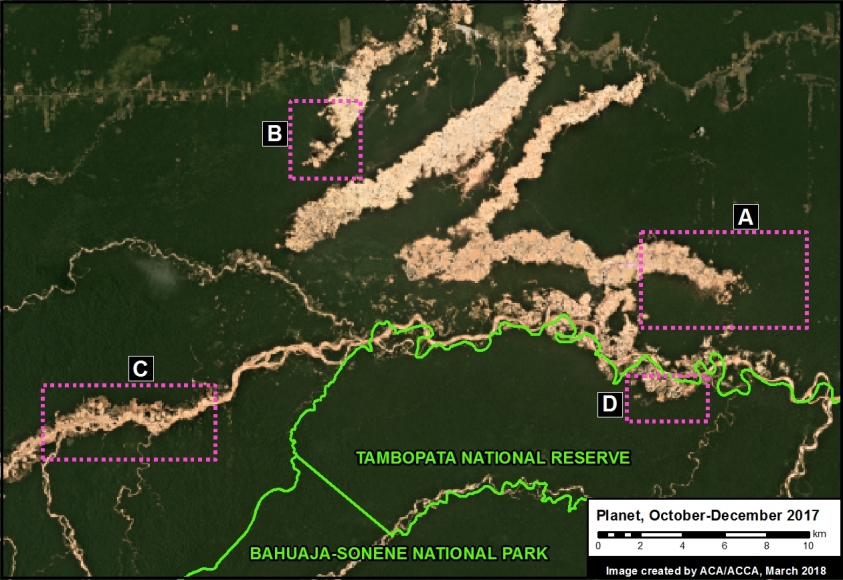
MAAP #79 – Seeing through the Clouds: Monitoring Deforestation with Radar
March 12, 2018
MAAP has repeatedly emphasized the power and importance of Earth observation satellites with optical sensors (such as Landsat, Planet, DigitalGlobe).
However, they also have a key limitation: clouds block the data about Earth from reaching the sensor, a common problem in rainy regions like the Amazon.
Fortunately, there is another powerful tool with a unique capability: satellites with radar sensors, which emit their own energy that can pass through the clouds (see Image).
Since 2014, the European Space Agency has provided free imagery from its radar satellites, known as Sentinel-1.
In the Peruvian Amazon, for example, Sentinel-1 obtains imagery every 12 days with a resolution of ~20 meters.
Here, we show the power of radar imagery in terms of near real-time deforestation monitoring. We focus on an area with ongoing deforestation due to gold mining in the southern Peruvian Amazon (Madre de Dios region).
Radar Imagery (Sentinel-1)
Image 79a is a series of Sentinel-1 radar images, showing the advance of gold mining deforestation between January 2017 and February 2018. We highlight 4 focal areas: A. La Pampa (Balata sector), B. Tierra Roja, C. Upper Malinowski, D. Tambopata National Reserve. In these radar images, the deforested areas appear in purplish-blue, while intact forests appear yellowish-green.
Note the rapid expansion of gold mining deforestation in La Pampa, as well as in the Upper Malinowski area. In contrast, note that the illegal gold mining invasion of Tambopata National Reserve, which escalated in 2016, was effectively halted in 2017.
Deforestation Data

The most urgent deforestation front is clearly La Pampa (Balata sector), which lost 1,082 acres (474 since October). The other urgent area is the Upper Malinowski, which lost 440 acres (208 since October).
Optical Image
References
Planet Team (2017). Planet Application Program Interface: In Space for Life on Earth. San Francisco, CA. https://api.planet.com
Citation
Villa L, Finer M (2018) Seeing through the Clouds: Monitoring Deforestation with Radar. MAAP: 79.























